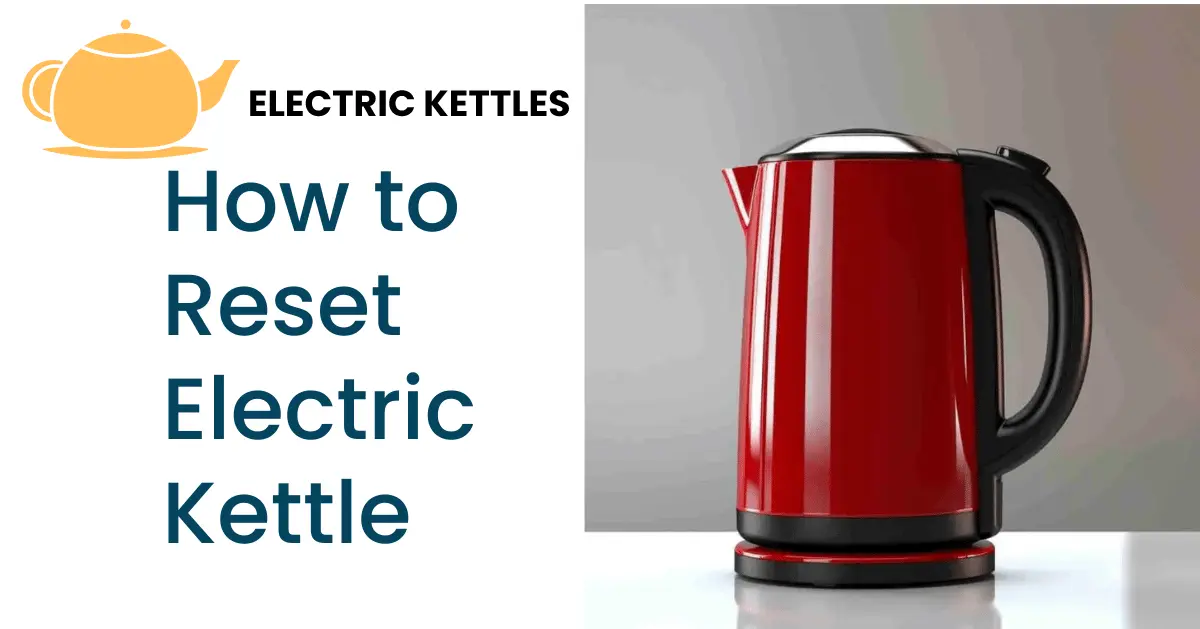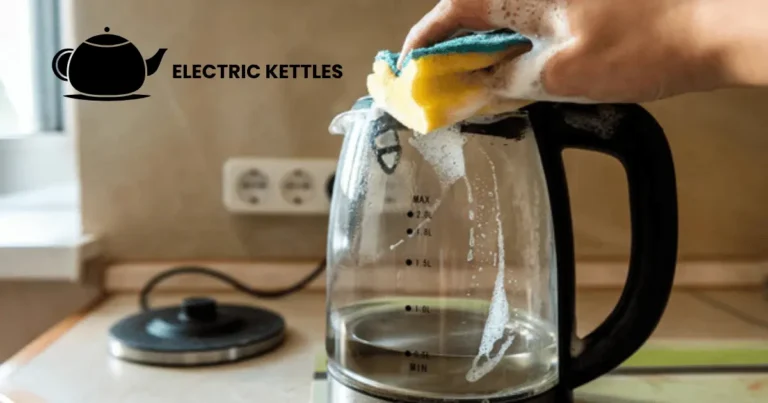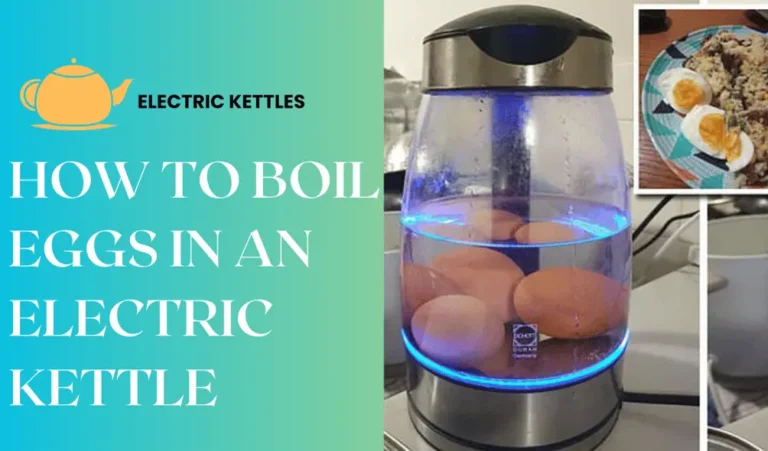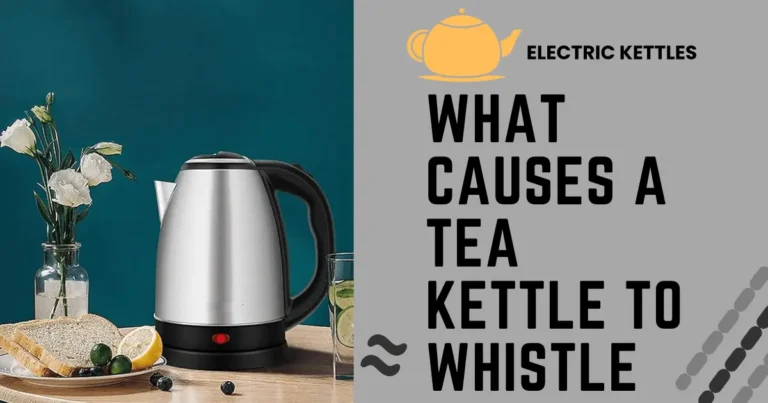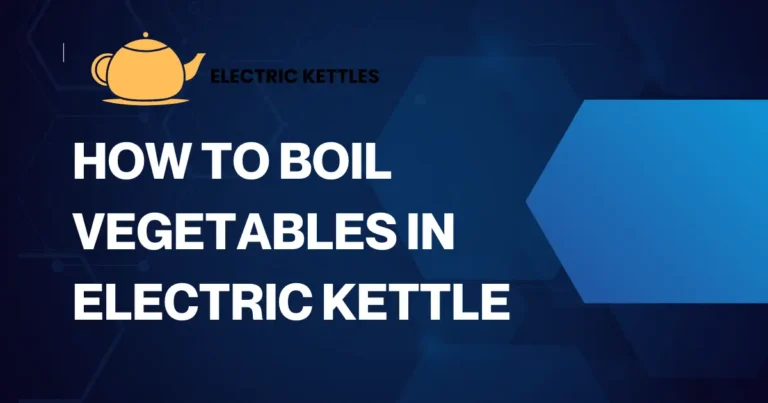How to Reset Electric Kettle
Electric kettles may need a reset when they stop working correctly. This can happen if the kettle is not heating water, the power light isn’t turning on, or the auto shut-off feature fails. A reset can help clear any small problems that are affecting the kettle’s performance. It is a simple process that can often fix issues without needing professional help.
Common reasons for needing a reset include a power surge, overuse, or a safety feature that has been triggered. Sometimes, limescale build-up or minor electrical faults can also cause problems. Resetting the kettle can restore its function and ensure it works safely.
Table of Contents
Identifying Common Issues
If your electric kettle isn’t working as expected, there are a few common issues to watch for. The most noticeable sign is when the kettle fails to heat the water or shuts off before the water reaches a boil. Other symptoms can include the power light not turning on or the kettle making strange noises while operating. These signs usually indicate a minor problem that may be resolved by resetting the kettle.
One common issue is a minor electrical fault. Power surges or fluctuations can disrupt the kettle’s normal function, triggering the need for a reset. Another problem could be the build-up of limescale on the heating element, which affects how well the kettle heats water. Regular cleaning can help prevent this, but sometimes a reset is necessary to restore proper function.
The kettle’s safety mechanisms may also be triggered, causing it to stop working. For example, the kettle might have an internal sensor that shuts it down if it detects overheating or dry boiling. These safety features protect both the kettle and the user but can cause the appliance to malfunction temporarily. Identifying these issues early can help you avoid more serious problems and maintain your kettle’s performance.
Types of Electric Kettles and Their Reset Methods
1. Manual Reset for Basic Kettles
Basic electric kettles often come with a manual reset button located near the base or handle. To reset these kettles, ensure the kettle is cool and unplugged. Press the reset button to clear minor faults and restore normal operation. This simple process can quickly fix issues like failure to heat or automatic shut-off problems.
2. Automatic Reset for Advanced Kettles
Advanced electric kettles are equipped with automatic reset features that activate when the kettle detects problems like overheating or dry boiling. To reset these models, unplug the kettle, allow it to cool down, and plug it back in. Some models may require you to hold specific buttons or follow a unique reset sequence. Always check the user manual for the correct instructions.
3. Resetting Smart Kettles
Smart kettles connected to apps or smart home systems might require a different reset approach. You may need to use the app or follow specific instructions from the manufacturer, such as disconnecting the kettle from Wi-Fi or using the app’s settings to perform a reset. This method ensures the kettle is properly reset and ready for use again.
Steps Reset Your Electric Kettle
- Unplug the Kettle: Unplug your electric kettle from the source. This step is crucial for safety, as it prevents any electrical shock or damage while handling the appliance. Make sure the kettle is cool before you start the reset process to avoid burns.
- Check for Visible Issues: Inspect the kettle for any obvious issues like a loose power cord, water inside the base, or limescale build-up on the heating element. Cleaning the kettle or fixing minor issues before resetting can sometimes solve the problem without further steps.
- Press the Reset Button: If your kettle has a manual reset button, locate it near the base or handle. Press the button firmly and hold it for a few seconds. This action should reset the kettle’s internal settings and clear any faults that may be affecting its function.
- Perform a Power Cycle for Automatic Models: For kettles without a reset button, you can perform a power cycle. Unplug the kettle, wait for at least 10-15 minutes to allow it to cool down completely, and then plug it back in. This simple step can often reset advanced kettles that have automatic shut-off features.
- Follow Specific Instructions for Smart Kettles: If you have a smart kettle, use the manufacturer’s app or manual to reset it. This may involve disconnecting the kettle from Wi-Fi, resetting it via the app’s settings, or following specific button sequences. Ensure that you follow these instructions carefully to avoid any damage.
- Test the Kettle: After completing the reset, plug the kettle back in and test it by boiling a small amount of water. If the kettle functions correctly, the reset was successful. If not, consider repeating the steps or consulting the user manual for further troubleshooting.
Alternative Methods to Fix Minor Issues
Clean the Kettle
A common cause of problems in electric kettles is the build-up of limescale on the heating element. This can affect the kettle’s ability to heat water properly or trigger safety features that shut it down. To fix this, clean the kettle with a mixture of vinegar and water or use a descaling solution. Let it sit for about 15-20 minutes, then rinse thoroughly. Regular cleaning can help prevent many minor issues.
Check Power Connections
Sometimes, the issue is not with the kettle itself but with the power supply. Check that the power cord is firmly plugged into both the kettle and the wall socket. Make sure there are no visible signs of damage to the cord. Also, test the wall outlet with another appliance to ensure it is working correctly. If the power connection seems fine, but the kettle still doesn’t work, try a different outlet to rule out electrical issues.
Inspect the Kettle’s Lid and Spout
Some kettles have safety features that prevent them from turning on if the lid isn’t closed properly. Make sure the lid is securely shut and there is no blockage in the spout. A partially open lid or a clogged spout can cause the kettle to malfunction or not heat the water as intended. Check these parts for any debris or damage and clean them if necessary.
Reset the Kettle’s Safety Mechanisms
The safety mechanisms may have been triggered if the kettle has overheated or boiled dry. Let the kettle cool down completely, then refill it with water and try boiling again. This can help reset the internal sensors and restore normal function. If the kettle still doesn’t work, consider consulting the user manual for further guidance.
FAQs
Q. Can resetting an electric kettle fix all issues?
No, resetting can only fix minor issues like electrical faults or safety triggers. For serious problems, like a broken heating element, professional repair might be needed.
Q. How often should I reset my electric kettle?
You should only reset the kettle when there is an issue. Regular use does not require frequent resets unless problems occur.
Q. Does every electric kettle have a reset button?
No, not all kettles have a reset button. Some use automatic resets or require unplugging to reset. Check the user manual for details.
Q. What should I do if the kettle won’t reset?
If the kettle doesn’t reset, try cleaning it or check for power supply issues. If it still doesn’t work, consider seeking professional help.
Q. Can resetting a smart kettle delete its settings?
Yes, resetting a smart kettle may delete custom settings or disconnect it from the app. You may need to set it up again after a reset.
Conclusion
Resetting your electric kettle can solve many minor problems, like power issues or safety triggers. It is a simple process that can bring your kettle back to working order without much effort. Knowing the type of kettle you have and following the correct steps will help you reset it safely and effectively. Always refer to the user manual for specific instructions.
However, remember that not all issues can be fixed with a reset. If problems continue after resetting, there may be a bigger issue that needs professional repair. Regular cleaning and maintenance are key to preventing problems and extending the life of your kettle.

